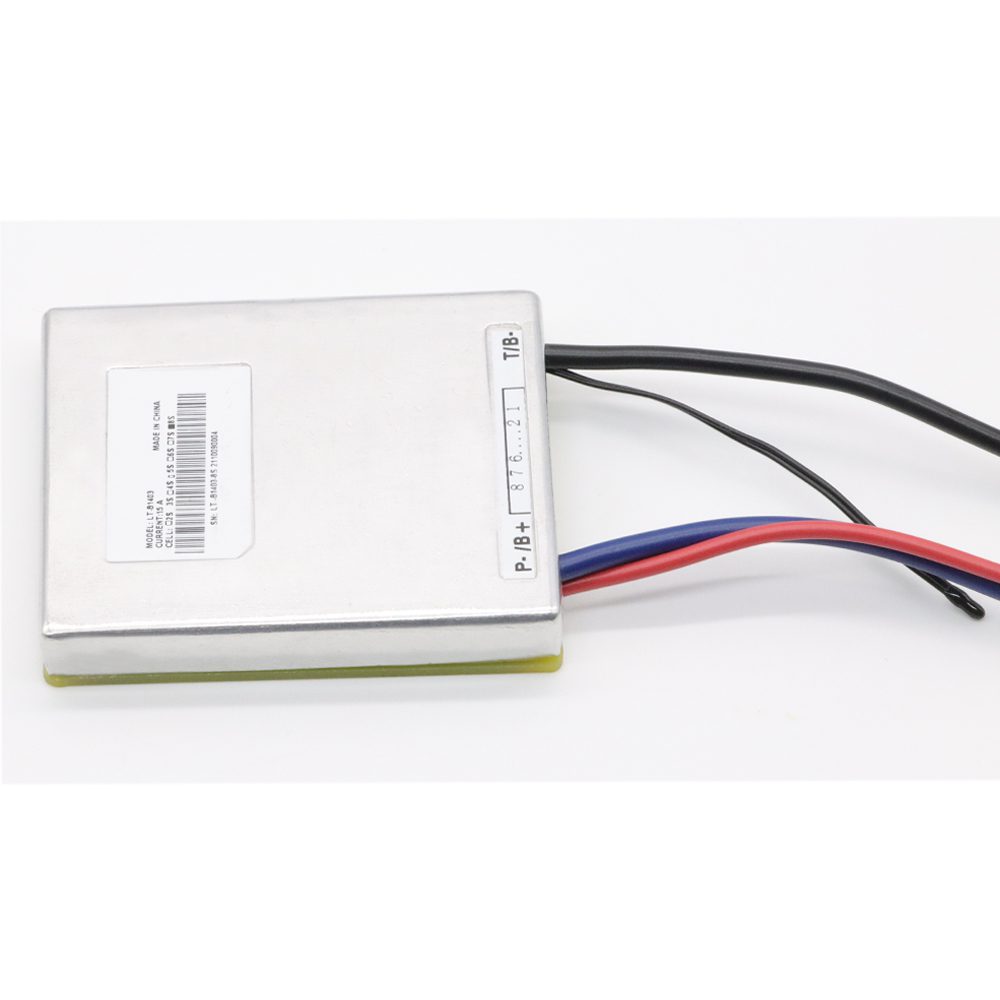
LTW 14s 52v 25A BMS with NTC Balance for Electric Bicycles
The B1403 Classic Model BMS is a versatile and reliable solution designed to support a wide range of battery types and applications. With its advanced features and robust performance, it offers exceptional functionality and convenience. Let’s explore the key features and applications of this BMS:
Versatile Battery Support:
The B1403 BMS is compatible with 7S-14S Lithium-ion(Max 14s 52v 25A BMS), LiFePO4, and Li-polymer batteries. This broad compatibility allows you to use it with various battery chemistries, providing flexibility and convenience for your specific requirements.
Balance Function and Temperature Sensing:
Equipped with a balance function, the B1403 BMS ensures optimal cell voltage balance, prolonging the overall battery life and enhancing performance. It also features an NTC temperature sensor, enabling accurate temperature monitoring for effective thermal management.
Optional Extra Shells:
For added protection and customization, the B1403 BMS offers optional extra shells. These additional shells provide enhanced durability and physical protection, ensuring the safety and longevity of your battery system.
High Continuous Discharging Capacity:
The B1403 BMS can handle continuous discharging currents of up to 25A. This high capacity allows for reliable power output, making it suitable for demanding applications such as Electric Bikes, Pedelecs, Scooters, Tricycles, and more.
Wide Range of Applications:
Widely used across industries, the B1403 BMS finds applications in Electric Bikes, Pedelecs, Scooters, Tricycles, and various other electric-powered vehicles. Its versatility and performance make it a popular choice for powering these transportation solutions.
Experience the reliability and versatility of the B1403 Classic Model BMS. With its support for multiple battery chemistries, balance function, temperature sensing, and optional extra shells, it offers a comprehensive solution for your energy management needs. Whether you’re in the electric vehicle industry or require a reliable battery management system for your project, the B1403 BMS is a trusted choice.
Note: Please consult the manufacturer’s specifications and guidelines for detailed information on installation, usage, and safety precautions specific to the B1403 BMS.
If high power BMS you are looking for, pls refer to LT-B1407







- When it comes to BMS assembly, there are several important notices to keep in mind. Here are some key considerations:
- Qualified personnel: BMS assembly should be carried out by qualified personnel who have the necessary knowledge and expertise in building automation systems. They should be familiar with electrical systems, control wiring, and the specific BMS components being used.
- Compliance with regulations: Ensure that the BMS assembly complies with all relevant local building codes, regulations, and safety standards. Adhere to electrical wiring standards and practices to ensure a safe and reliable installation.
- System design and planning: Before assembling the BMS, have a well-thought-out system design and plan in place. This includes identifying the various components, their locations, wiring requirements, and communication interfaces. Consider the integration of different building systems, such as HVAC, lighting, and security, into the BMS.
- Documentation and labeling: Properly document the BMS assembly process, including wiring diagrams, equipment schedules, and component specifications. Label all wiring, devices, and control points clearly for easy identification and troubleshooting in the future.
- Wiring and connections: Pay close attention to the wiring and connections during assembly. Follow the manufacturer’s guidelines and specifications for proper wiring techniques. Ensure that all connections are secure, properly insulated, and free from loose strands or exposed conductors.
- Power and grounding: Implement proper power supply and grounding measures. Ensure that power sources are correctly wired, protected with appropriate circuit breakers or fuses, and adequately sized for the BMS components. Use proper grounding techniques to minimize electrical noise and ensure system stability.
- Testing and commissioning: After assembly, thoroughly test the BMS to ensure its proper functioning. This includes checking the wiring continuity, verifying sensor and actuator operation, and testing the communication between different components. Commission the system according to the manufacturer’s guidelines and perform any required calibration or adjustments.
- Maintenance and documentation: Establish a maintenance plan for the BMS, including regular inspections, preventive maintenance tasks, and software updates. Keep detailed records of maintenance activities, repairs, and any modifications made to the system.
- Training and user support: Provide training to users and facility staff on how to operate and interact with the BMS effectively. Create user manuals and documentation that explain the system’s functionalities, troubleshooting procedures, and recommended practices. Offer ongoing support and assistance to users as needed.
- It’s important to consult the specific manufacturer’s documentation and guidelines for the BMS components you are using, as they may have additional notices and instructions specific to their products.



